Photography by Paige Green (except where noted)
Wisdom of the ages revealed and contrasted to modern notions of genetic progress…
Enhancing nature’s time-tested processes or Engineering… the difference between this phrase and word is a clear line in the sand that divides many millennia of human efforts to breed plants and animals, and the contemporary field of genetic modification. Genetic engineers argue that their efforts are ‘just an extension’ of what humans have always done to develop the crops we find ourselves wholly dependent upon. However, at no time in our anthropological history have humans allowed (until now) the centralization, privatization, and singularly ‘bottom-line’ focused entities to manage the genetic backbone of human agriculture—this is a first. The result of which has created a cascade of effects, including our current state of fiber farming, where monocultures representing a singular genetic type are now dominant. Over 80% of the cotton in the United States produces a toxic protein that kills the larvae of butterflies, moths, beetles, cotton bollworms and flies (lepidopteran larvae)1 and is dependent on the use of a synthetic compound (sold by the same companies that produce the seeds) known as glyphosate (main ingredient in the herbicide Roundup©). This compound has been deemed by the World Health Organization’s Cancer Research Arm as a probable carcinogen,2 adding to the 400 compounds that are known to cause cancer. This international body of scientists states, “The first step in cancer prevention is to identify the causes of cancer.” Roundup has been banned in France, and yet we here in the United States eat and wear materials laden with the chemical.
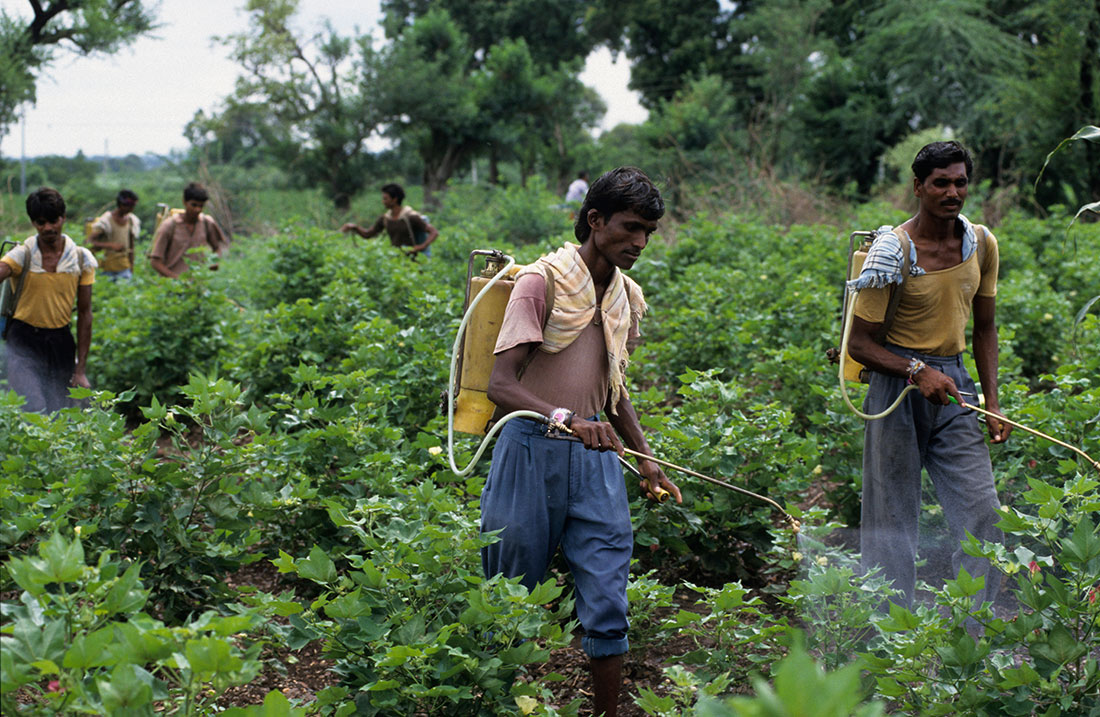
While there is great monetary wealth being accumulated by promoting an idea that farming can be made ‘easier & cheaper’ with patented sprays and the use of toxic DNA, there remain agrarians who continue building upon the work of our collective plant breeding ancestry. In the fiber-farming world, this is rare to find—and yet there is one woman, Sally Fox, who continues to enhance the beneficial traits of the two major cotton species—Gossypium hirsutum and Gossypium barbadense. She has been working for 30 years to develop her own certified organic varieties that are now known and loved across the world.
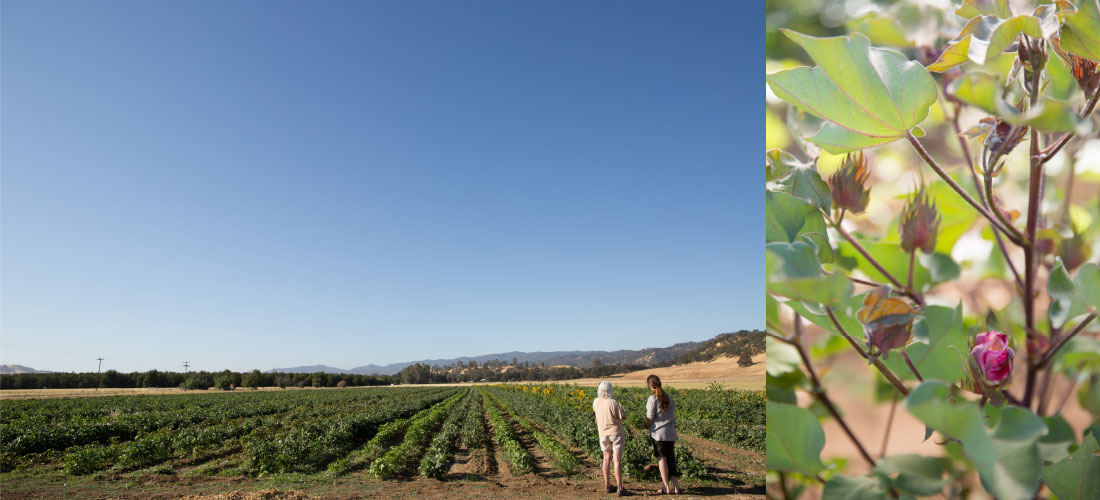
We caught up with Sally at her research plots this season to see how this classical breeding practice was unfolding.
We began by walking through varieties of Sea Island cottons—Gossypium barbadense. This cotton once did famously in the South, succeeding particularly well on the islands of South Carolina and Georgia. Post Civil War, these varieties fell by the wayside. Fox’s Sea Island breeding revival is something she’s been envisioning for decades. “I’m doing in 2015 what I would have done in 1986, when I was offered a plant breeding job in Barbados. I’ve now planted the farthest descendants of the old varieties and I’m crossing them. Once crossed, I will send them back to their original place in the South. There is a very interested group (Donna Hardy, Glen Roberts, Adele Stafford, and Dan Rhodes) who have a deep commitment to see the return of the Sea Island cottons. Next summer I want to see these plants on their land, and I would love to come out and help them make crosses.”

The farthest descendants of Sea Island Cotton are from international sources that have been housed at the USDA seed bank. We walked through Russian and Egyptian varieties (to name a few). Fox bent down and pointed to one of the G. barbadense plants growing at her feet, “The story goes that seed breeders protected these seeds with all they had—when starvation in Russia hit during the revolution people raided the seed banks, and the plant breeders put their lives on the line to dissuade hungry masses.”
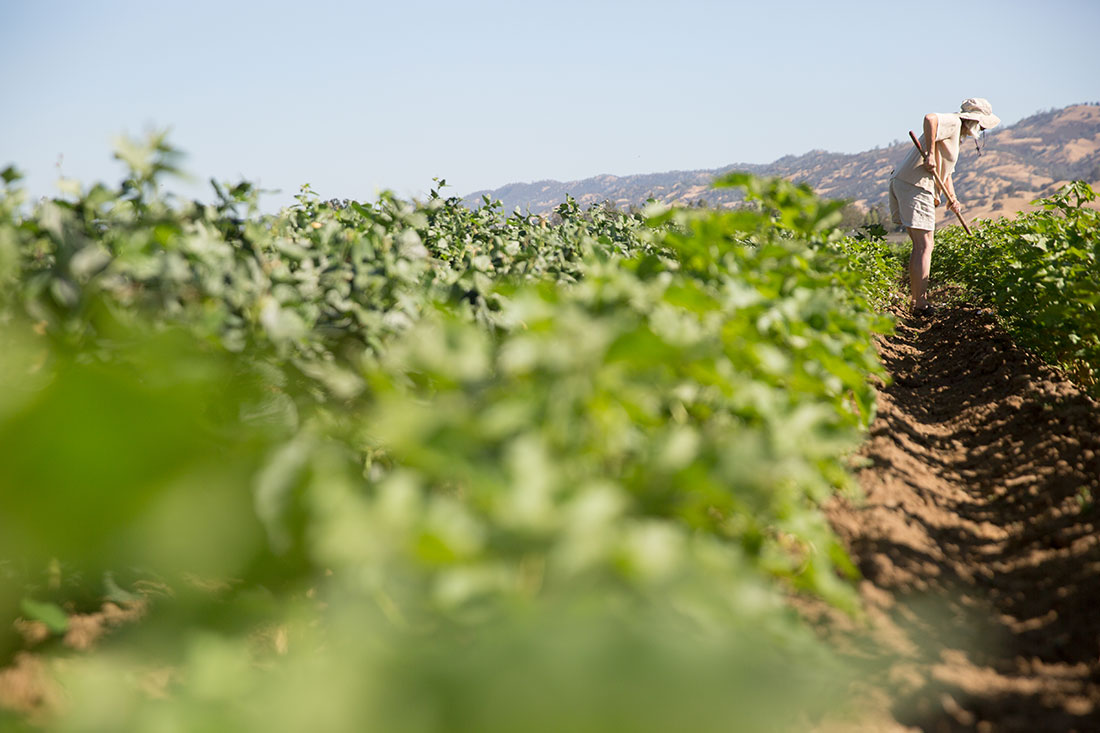
As we walked through the rows, we discussed how the system of plant breeding has historically been organized to respect the advances of individuals, and simultaneously benefit the whole of society. Any plant breeder can receive seed from the USDA seed bank—they can grow out the plants and collect seed from them for their own use; they cannot sell or commercialize this seed, however. A seed with a plant variety protection (PVP) cannot be commercialized unless you’re the one who filed for the protection. “Any breeder could work with my seeds, develop new traits through classical breeding practices, stabilize those traits, name their variety and fill out the paperwork for plant variety protection.” This system of sharing advances the collective genetic pool, while giving credit where it is due; this is the baseline of the PVP model. “It’s a wonderful system,” said Fox.
Unlike the more recent patenting processes that have been done by large genetic engineering seed companies, the PVP allows for generation after generation of seed breeders to expand and enhance upon one another’s work. “There is a huge distinction between PVP and patenting,” said Fox, “As a breeder you are participating in the advancement of everyone else; patenting a trait halts that collective advancement potential—in the case of patenting you cannot save patented seed or give it away.”
As we walked through the Sea Island project and into Fox’s well-known color-grown varieties, the inter-planting method became a familiar pattern as we traversed through the rows. Sunflowers were used to demarcate the breeding plots of different varieties, and long rows of Fox’s color-grown varieties were interspersed with black-eyed peas (for nitrogen fixing, food, and to deter bees from the cotton). Within the rows we saw emergent colorful cotton flowers ready to bloom. “The green Gossypium hirsutums I’ve bred are unique in that they have a red coloration to the flower just before it opens, they turn pink on the first day, and transition to a purple color when they age,” said Fox. Gossypium hirsutum is the world’s most common variety of cotton, known as ‘upland cotton’—it was and is able to be grown in much poorer soils and thus it has been successful in providing yields for large cotton markets.

Fox has been breeding for traits such as color (green and brown fiber are the most famed), but also for traits such as staple length, color and light fastness (how the fiber performs in a textile), and yield, for over three decades. Her work in the field consists of a good amount of observation followed by medical precision actions. A season’s work will include consciously cross-pollinating plants to produce what are known as F1s (or first generation seeds). The first generation plants are grown the following season and are 100% hybrids. The seeds they produce are known as F2s (or second generation.) From these F2s, which are planted in the third season, Fox begins to select seed (no more crossing takes place typically), and she continues to select for many generations, season after season, until the seed is stable and 100% consistent with the parent plant.
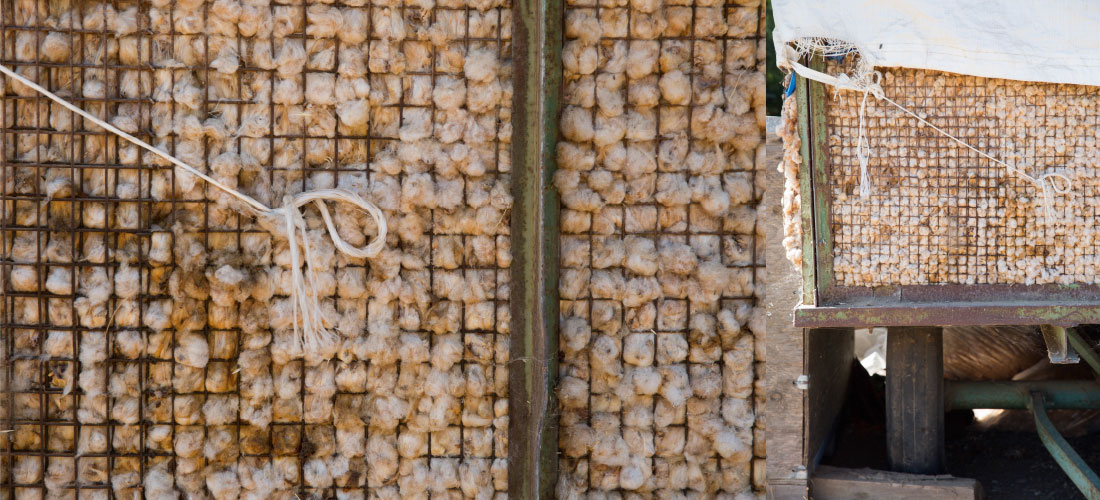
The cross pollinating itself is a sensitively approached matchmaking effort. Cotton typically self-pollinates before the flower even opens. “You go in the night or morning before the flower opens, take a petal off and remove all the pollen with tweezers and cover the flower with a bag and mark it. You bring the father (pollen) of one plant to the stigma (female part) of another.”
In first 10 days after pollination the fiber length is established and then the next 35+ days the layers of cellulose are built up, one layer at a time. In the green varieties, the color exists between each layer of cellulose, and in the brown varieties the color is in the center of the lumen of the fiber.
The complexity and beauty of these cotton varieties runs deep and Fox’s knowledge covers every facet, from the science to the cultural history. She is a teacher by nature, and she is now taking the time to cultivate a curriculum to pass along her breeding knowledge to the next generation. Her classes this season might still have room, and if you would like to tour her farm you can purchase tickets here. If you would like to support these breeding efforts you can sponsor a breeding plot and even make arrangements to visit your plot at Fox’s farm.
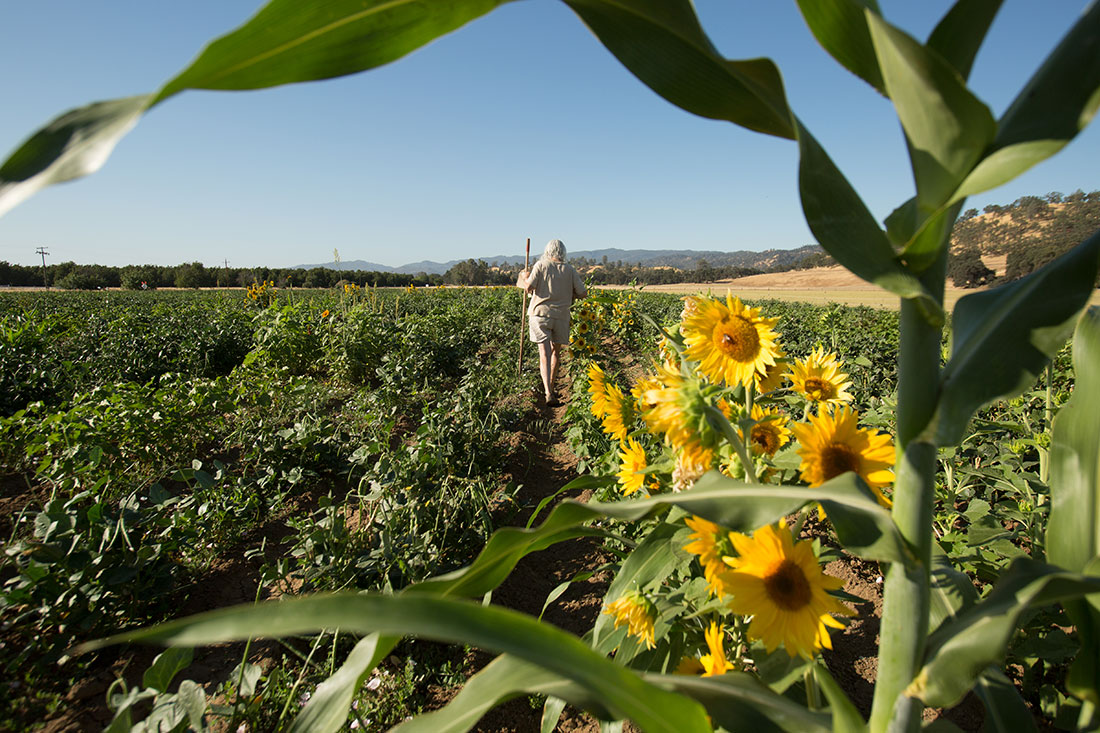
Fox is also growing dye plants for Oakland based store A Verb For Keeping Warm this year, as well as flax. We look forward to seeing this collaboration unfold throughout the growing season. If you do visit Fox’s farm, you’ll also be able to walk down the rows of brightly colors of marigolds, coreopsis, and small blue flax blossoms.

We look forward to learning more about Fox’s work this coming fall at the Grow Your Jeans fashion show, where her cotton is the feature of the first ever 90-mile “Grown & Sewn” denim project. Tickets to the show can be purchased here.
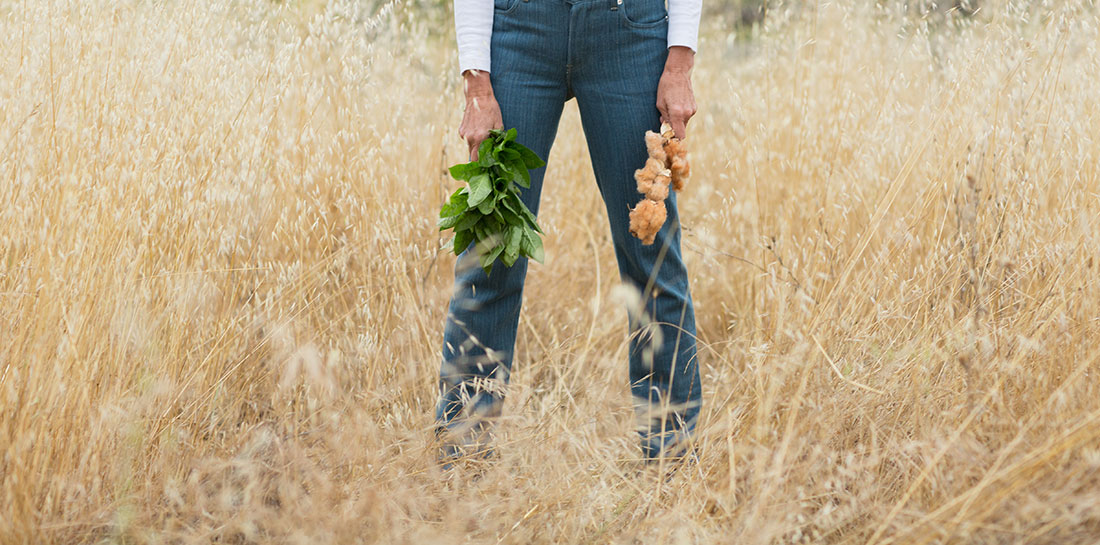
1http://www.ers.usda.gov/data-products/adoption-of-genetically-engineered-crops-in-the-us/recent-trends-in-ge-adoption.aspx
2http://www.ewg.org/release/world-health-organization-labels-glyphosate-probable-carcinogen
